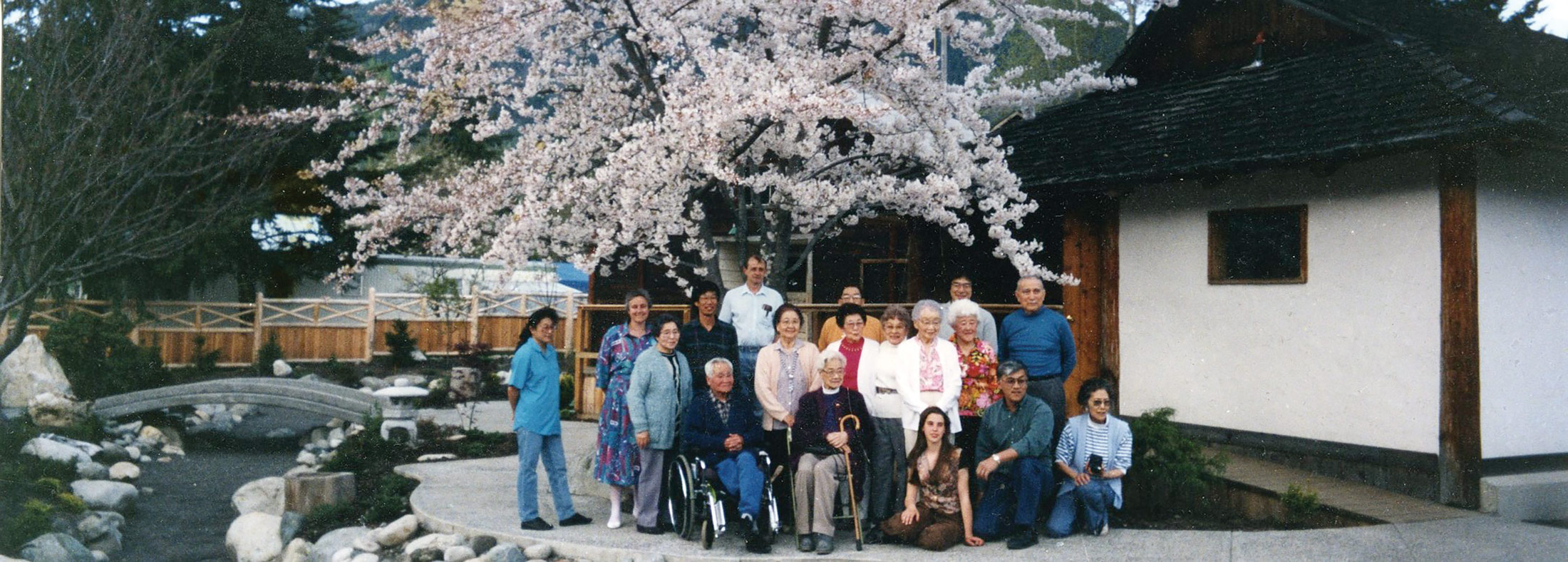





A short history
The Nikkei Internment Memorial Centre opened its doors in 1994 as an initiative from the New Denver Kyowakai Society to commemorate and honour the stories of over 22,000 Japanese Canadians who were stripped of their civil rights, labelled “enemy aliens” and uprooted from their coastal homes during the Second World War. Located on the site of a former internment camp, the original buildings, period artefacts, interpretive displays, and Heiwa Teien Peace Garden designed by the renowned Roy (Tomomichi) Sumi, chronicle this extraordinary episode in Canadian history.

A longer history
A constellation of events catalyzed a small group of volunteers in a tiny mountain village to create a memorial to their internment during the Second World War, to place their experience into the context of the more than 22,000 Japanese Canadian internees. The New Denver experience was unique in that while most were forced east of the Rockies or to move to Japan after the war, detainees from other camps were shunted to the village’s tuberculosis sanatorium along with caregivers and others who were too unwell to move. As a document in the Kyowakai Hall states, they were expected to die soon but many survived and created meaningful lives in the Slocan Valley. Others stayed because they had nowhere else to go, showing great courage, conviction and determination as they resisted pressure from the RCMP to move on.
The NIMC became the only centre of its kind in Canada.
With the NIMC, local Nikkei (people of Japanese ancestry who live outside Japan, as citizens of other countries) wanted to tell their story, partly to inspire Nikkei with the fact that they endured and to assure future generations that they too could tap into such inner strength. They did not want to be considered victims, nor did many of the elders think of their actions in creating the centre as political statements—or at least that was the case in the early 1990s when the centre was built. There were phases of response to internment, with reactions varying from shock, anger, fear or resignation during wartime to acceptance (for many) as more time went on. Rather than succumb to bitterness, with the NIMC the elders characteristically wanted to create something positive out of their wartime and postwar experience. Younger Nikkei were more likely to be politically active.
The New Denver Kyowakai Society was, until it finally disbanded in 2018, the only wartime Japanese Canadian internment organization still in operation. The centre’s purpose was to collect, conserve, research, exhibit and interpret objects that represent the life and conditions of the Nikkei living in the Orchard section of New Denver and surrounding West Kootenay internment camps between 1942 and 1957. Displays draw attention to global issues of racism, injustice and resilience.
The centre is a place to learn, reflect, and preserve the local history of internment and the Second Uprooting, when Japanese Canadians were given the ultimatum after the war of moving east of the Rocky Mountains or to Japan. It consists of the Kyowakai Hall with its many photographs and objects on display; three internment shacks—one for staff to welcome visitors, one with objects from wartime, and one that shows life from the end of the war until 1957; the Heiwa Teien Peace Garden and a vegetable garden; and a Peace Arch, all enclosed by a wooden fence. The Centennial Building beside the Kyowakai Hall is not open to the public.
– adapted from the preface to Kyowakai, Memory and Healing in New Denver, BC, by Anne Champagne
For further information on the historical significance of the Nikkei Internment Memorial Site please visit HistoricPlaces.ca
Pour obtenir de l’information sur le lieu historique national du Canada du Nikkei Internment Memorial Centre, veuillez visiter Lieux Patrimoniaux de Canada.
The NIMC was designated a National Historic Site under the Historic Sites and Monuments Act in 2007. At a ceremony on July 31, 2010, the Village of New Denver unveiled a plaque honouring the Kyowakai Society’s contributions to the village and federal representatives dedicated a plaque about the centre’s national historic site designation.
In 2017, Heritage BC listed the NIMC, Kohan Garden, the Orchard and other Slocan Valley internment camps as significant Japanese Canadian Historic Places under the provincial government’s Historic Places Recognition Program.